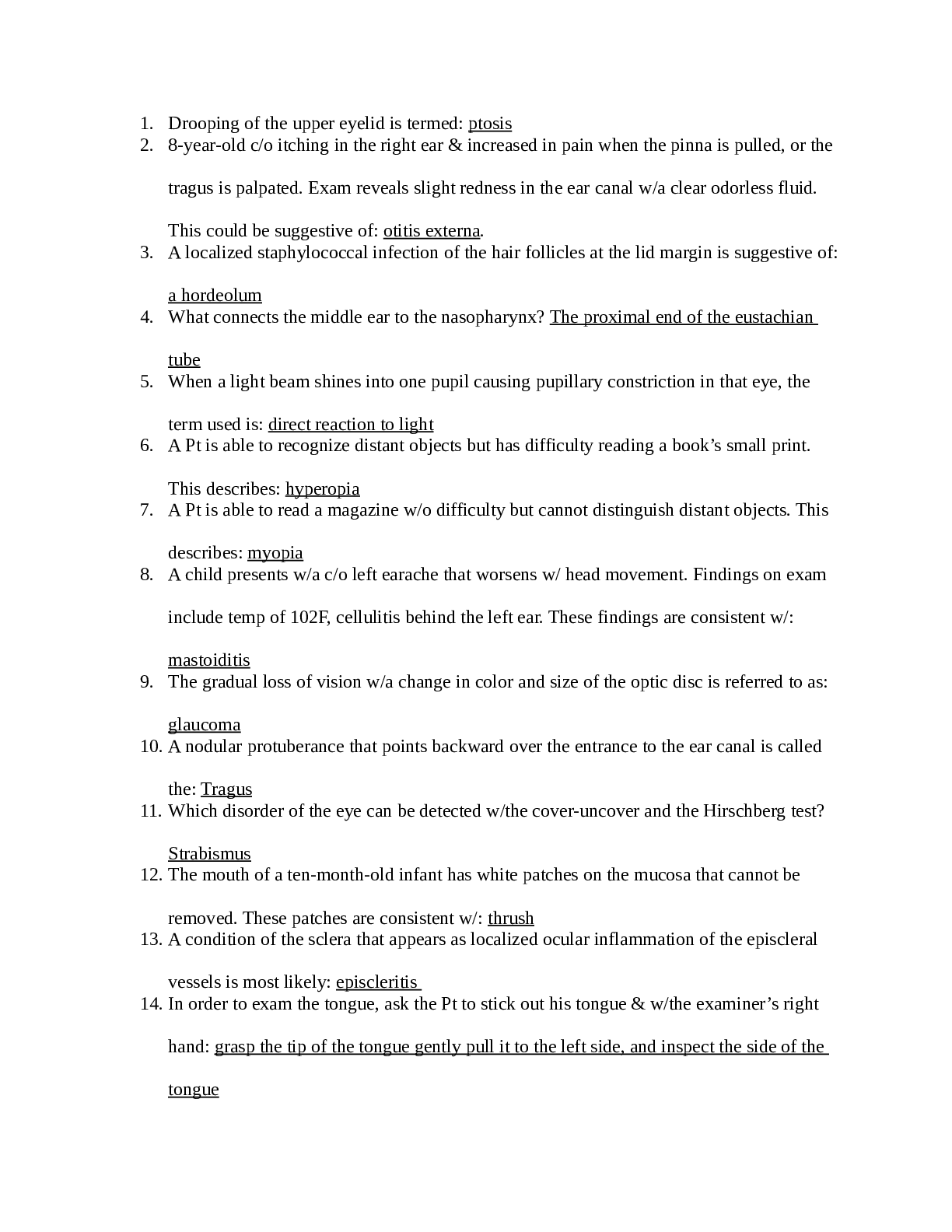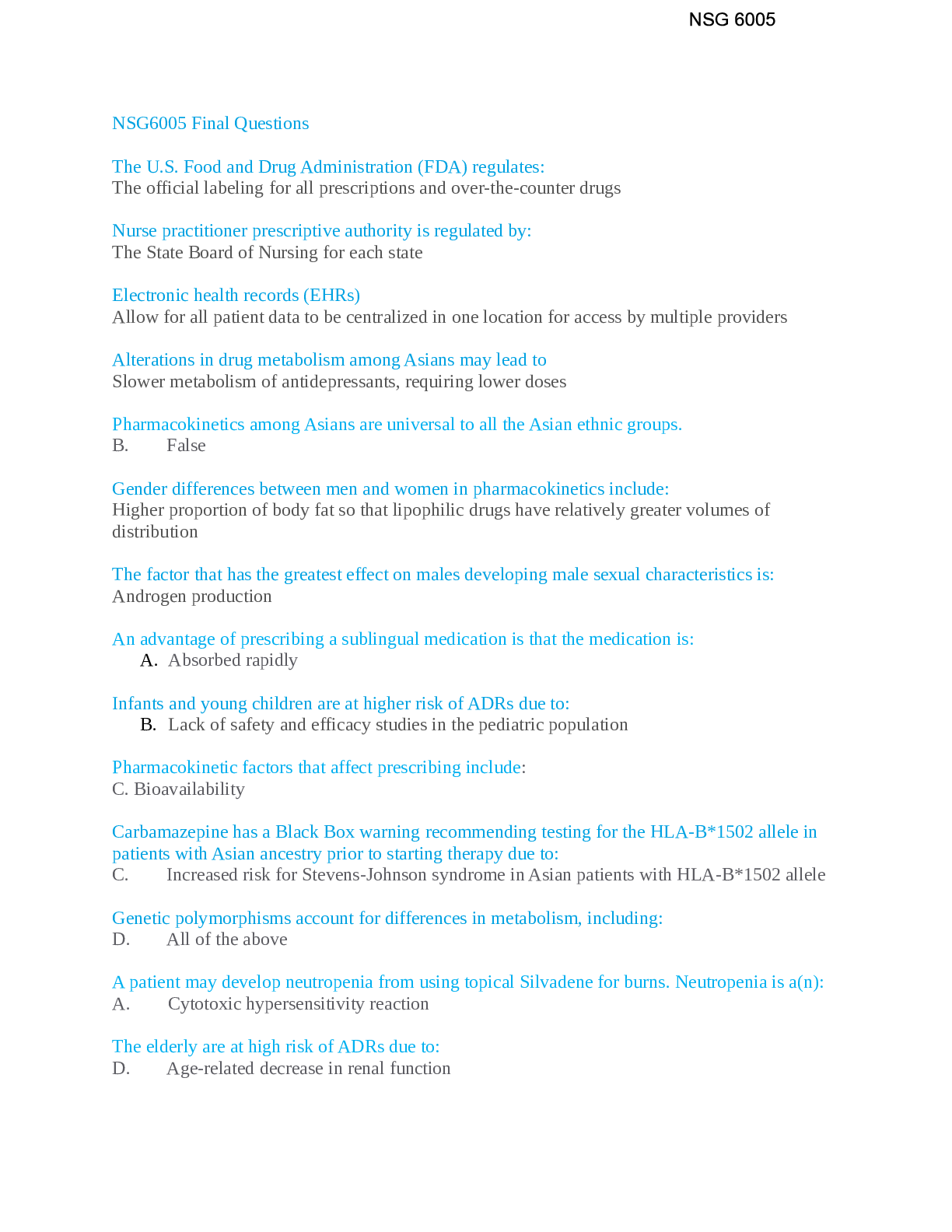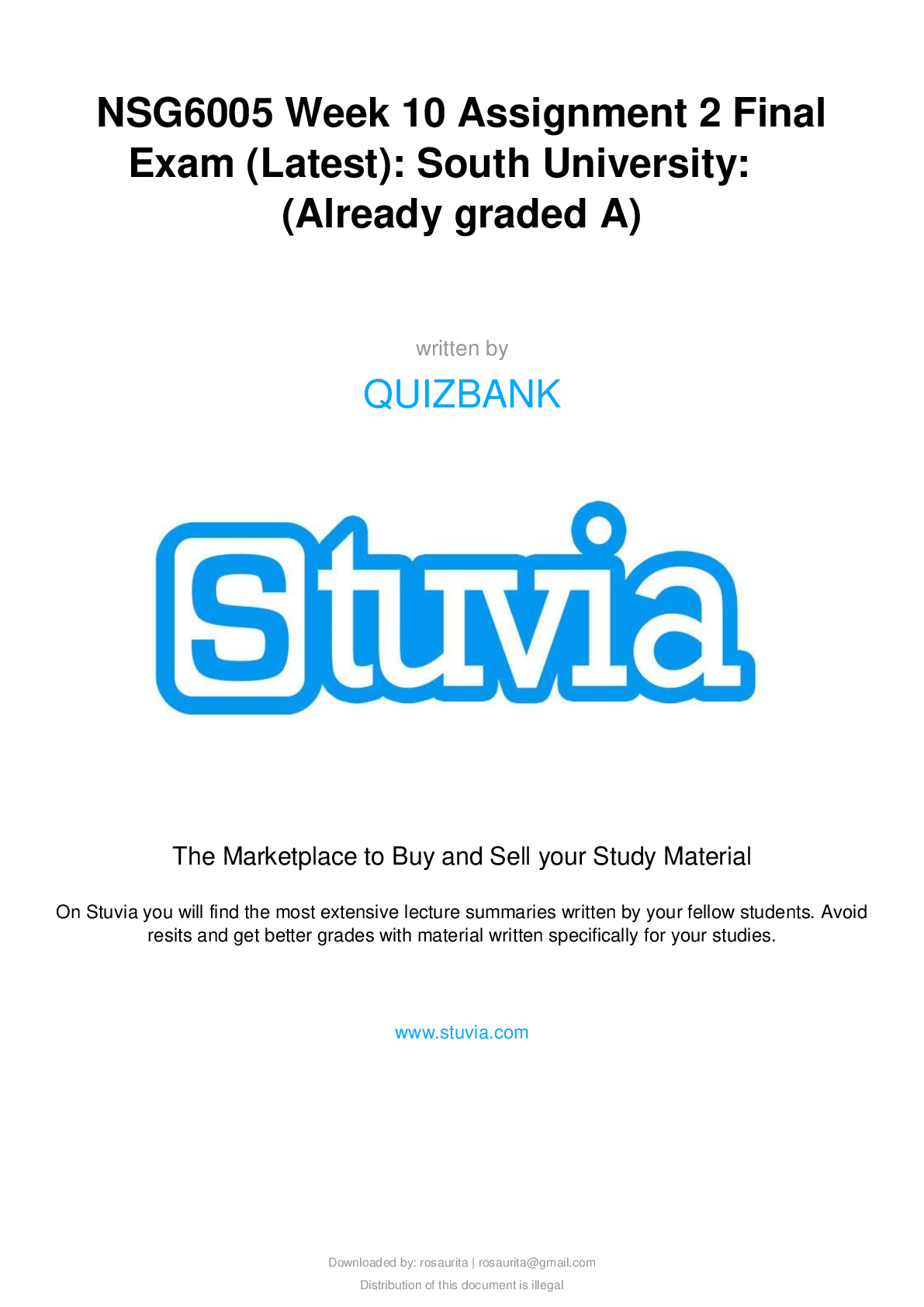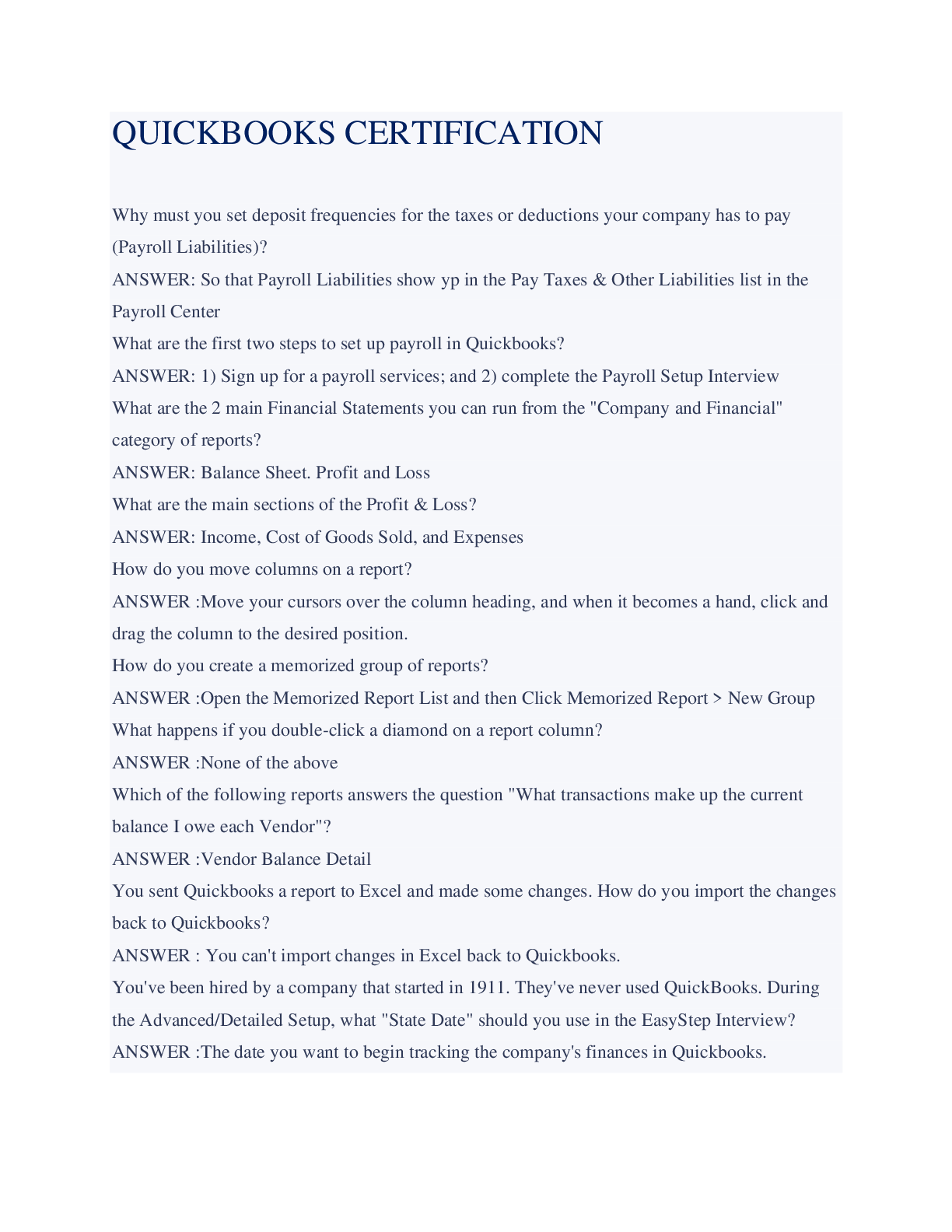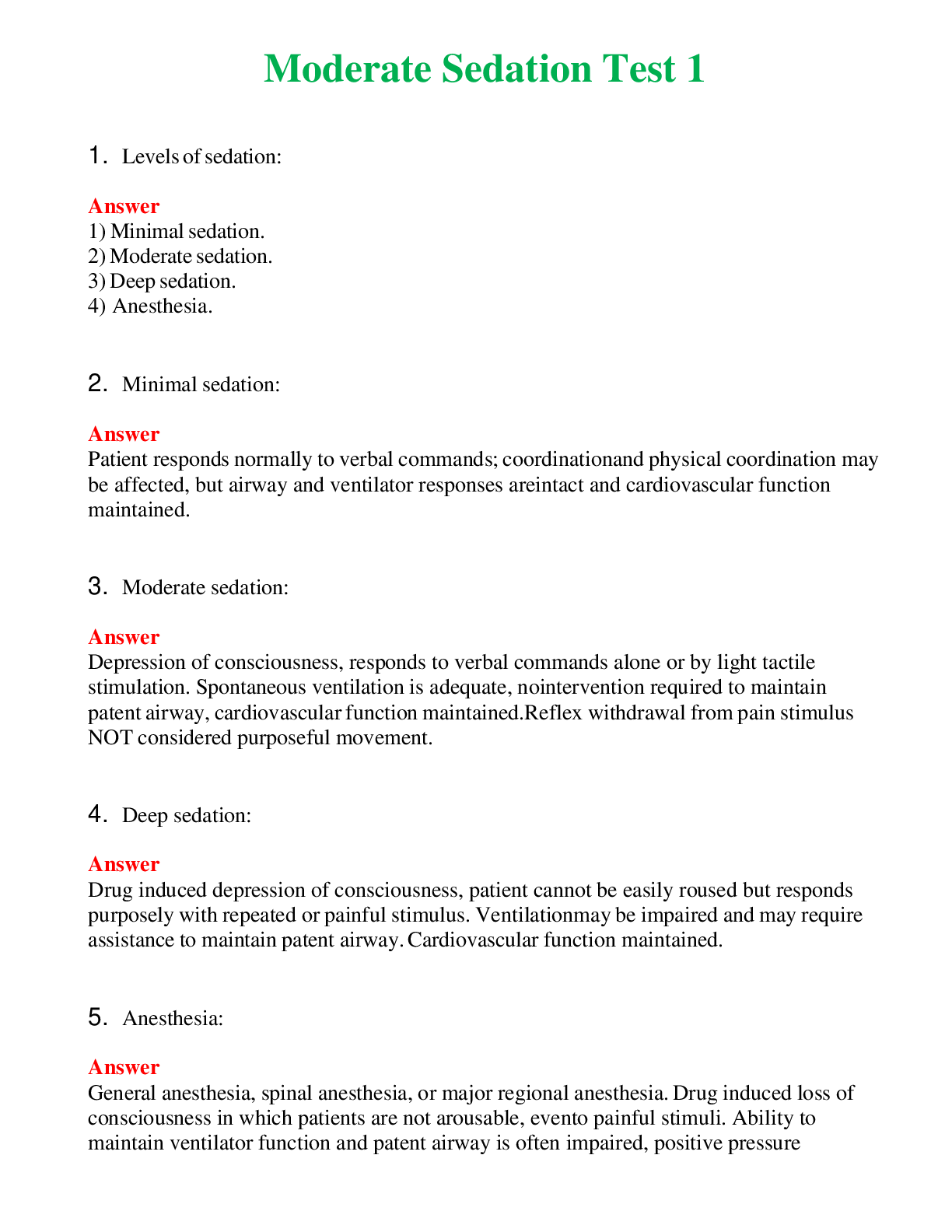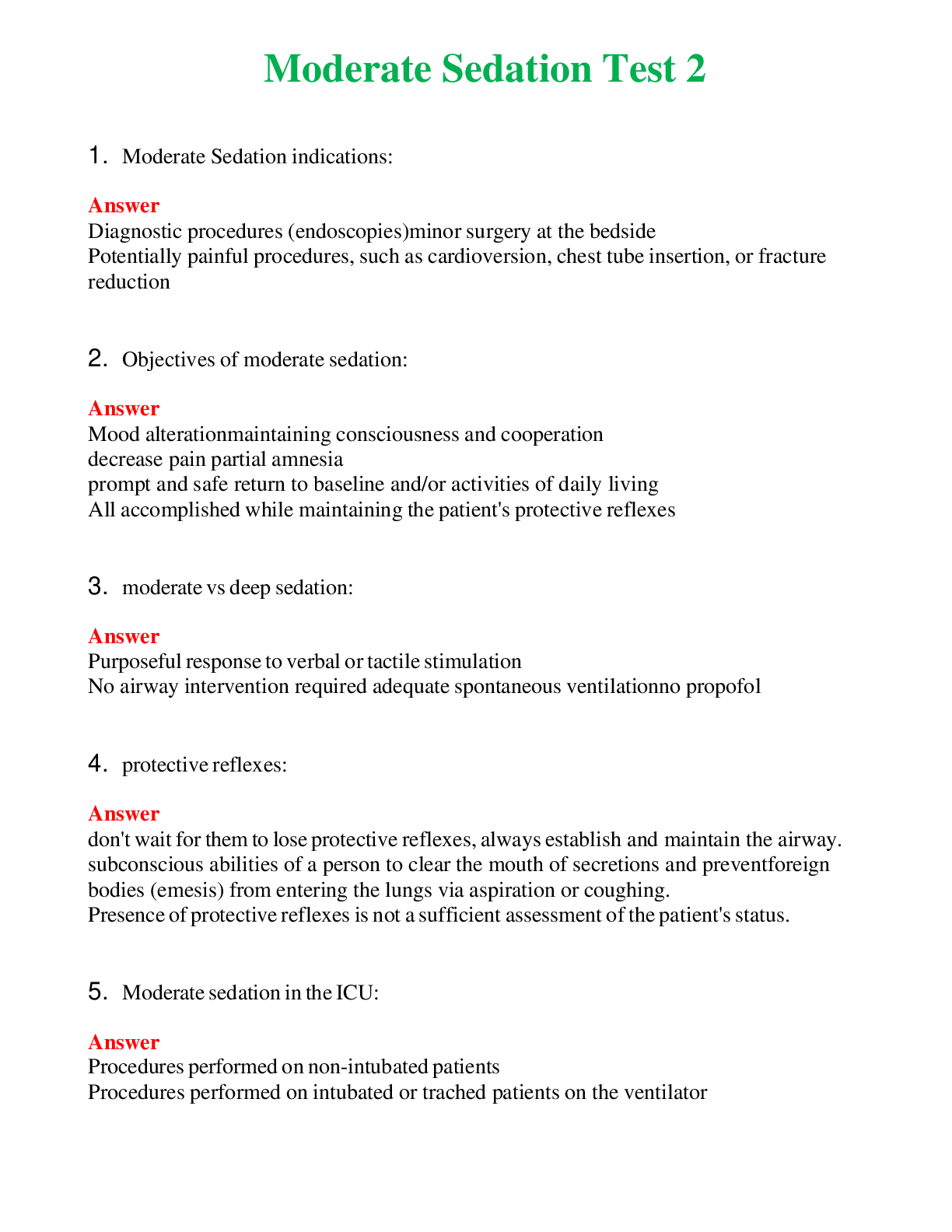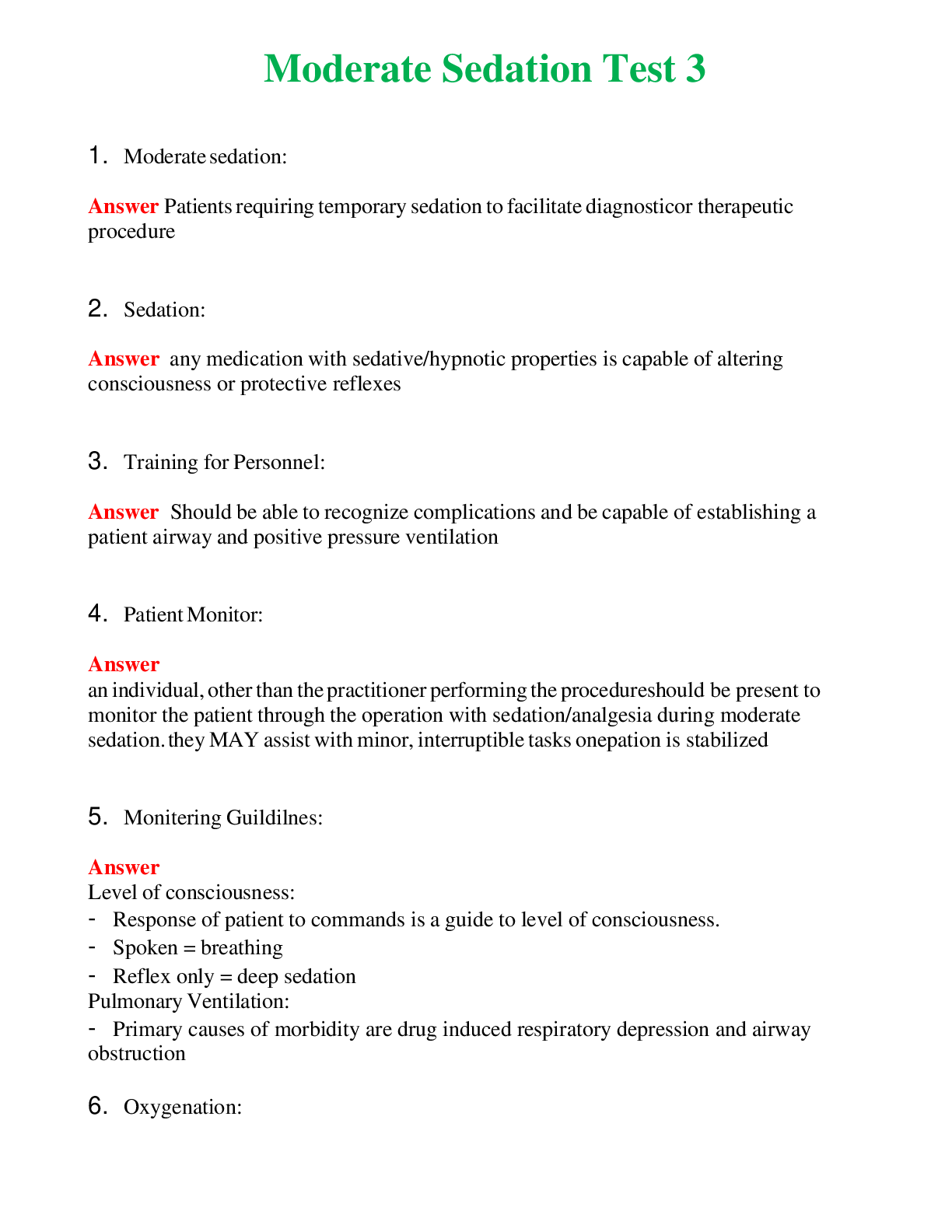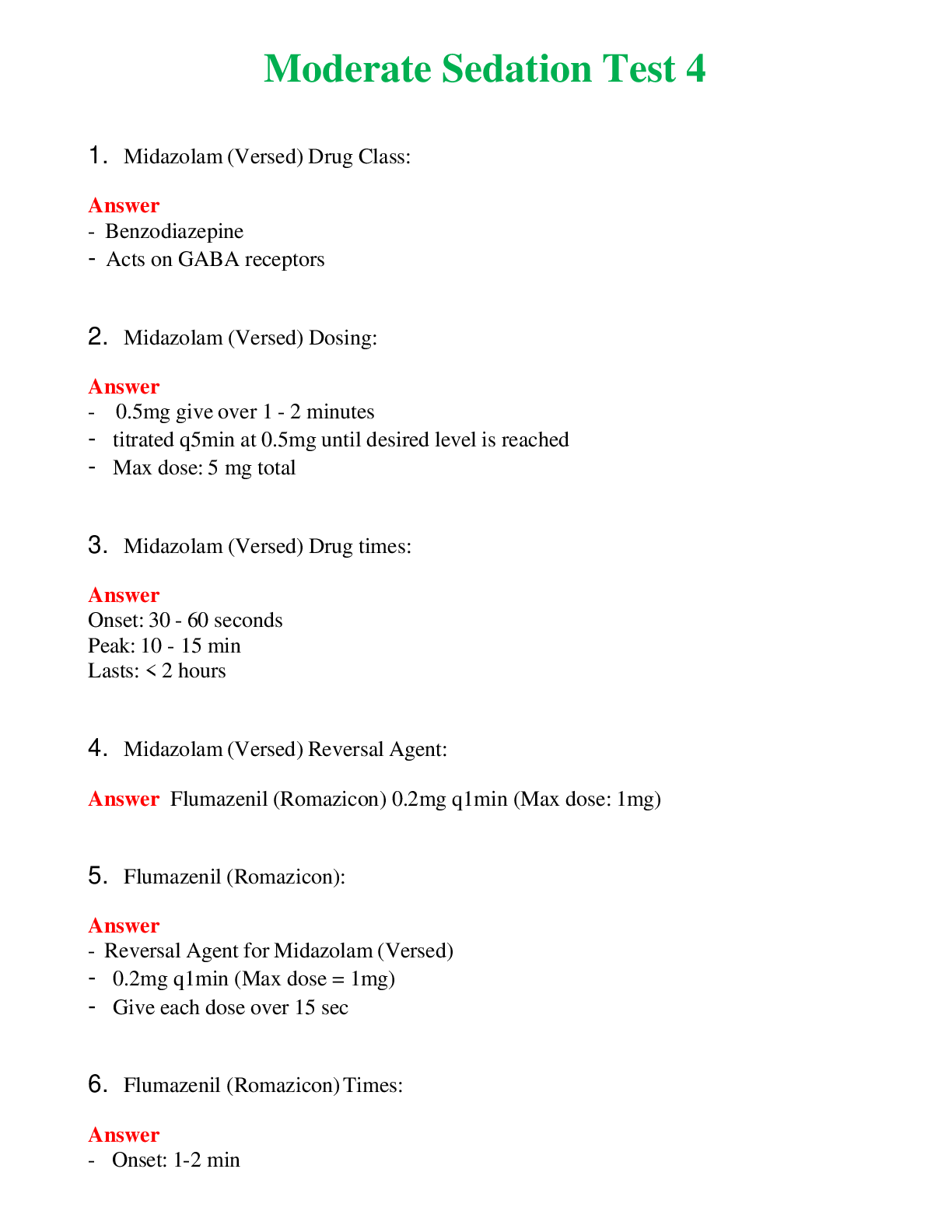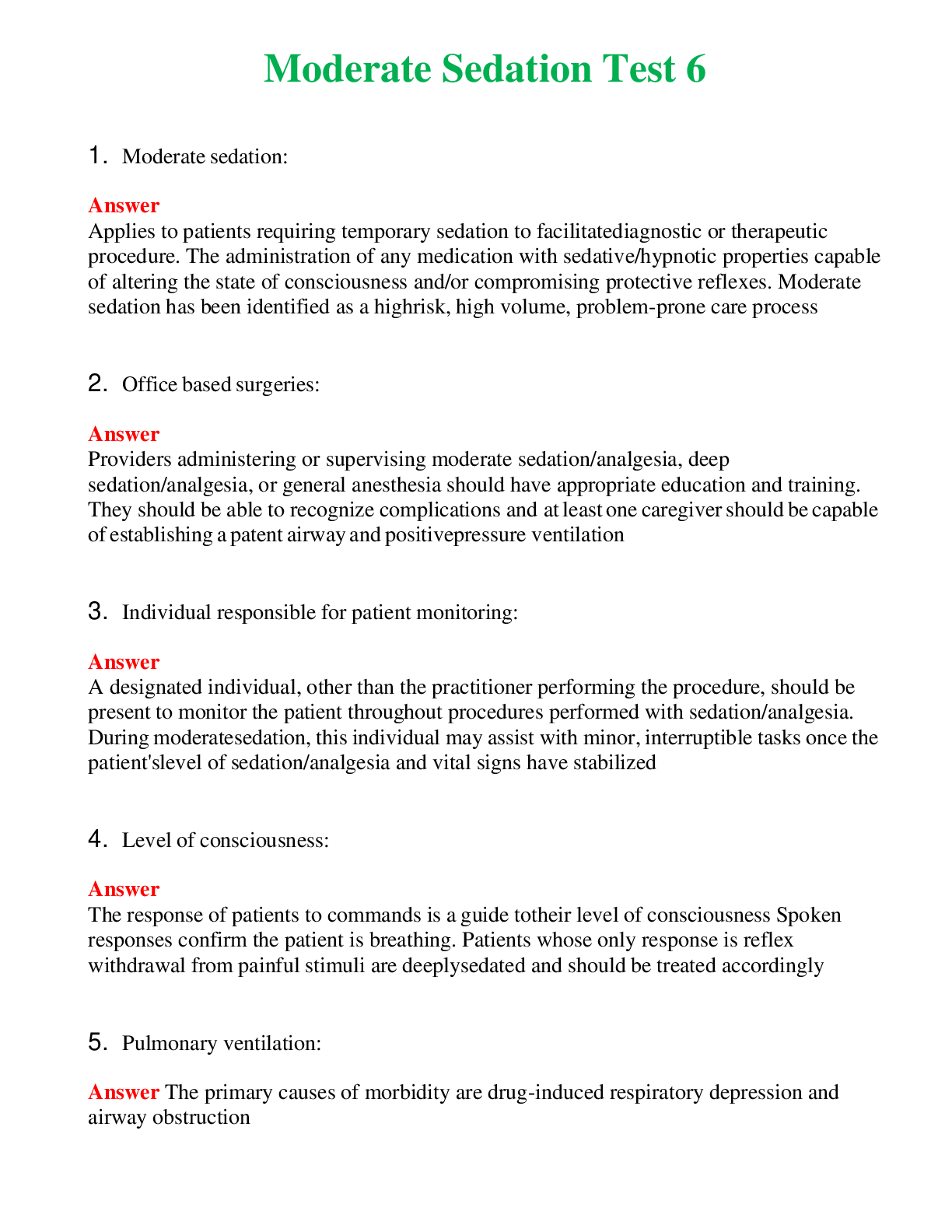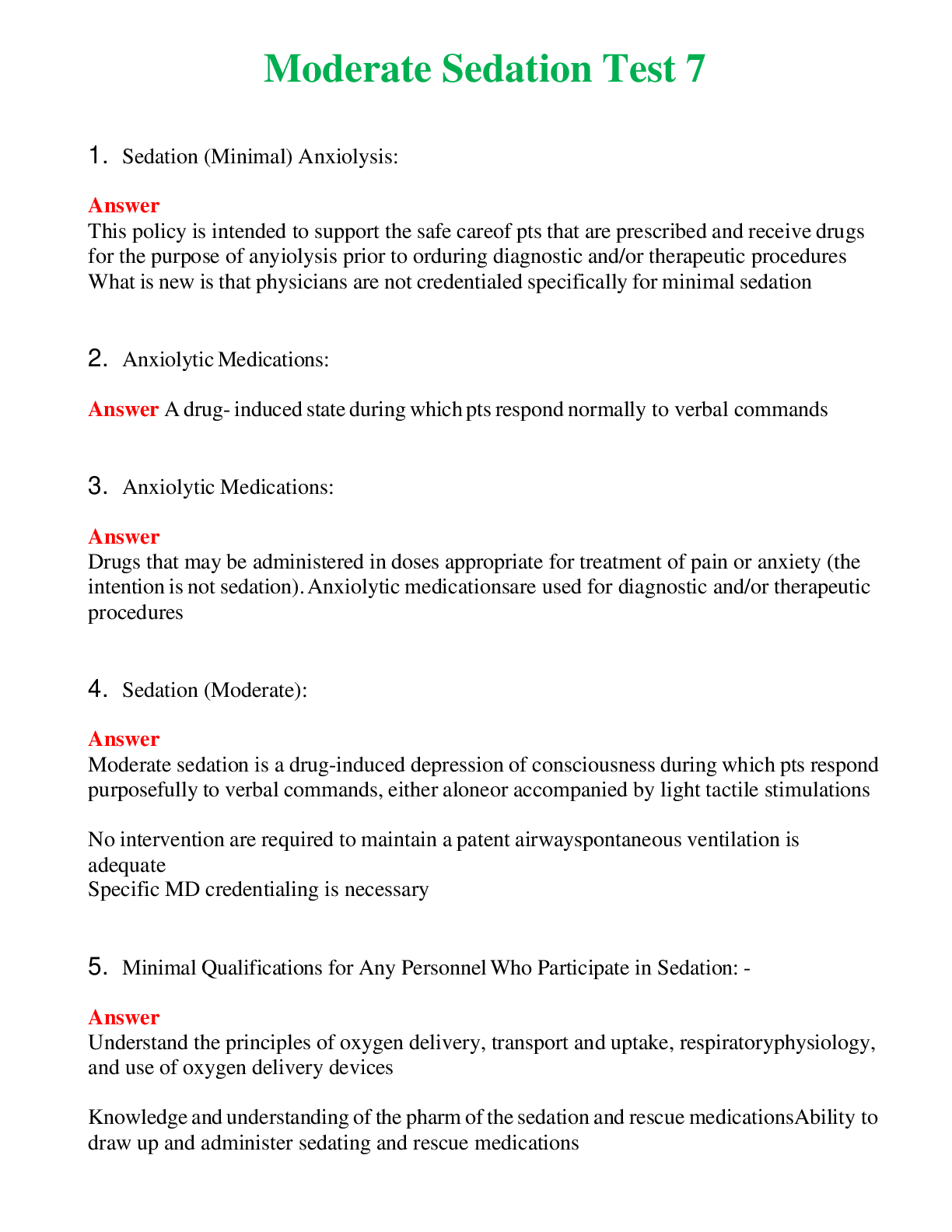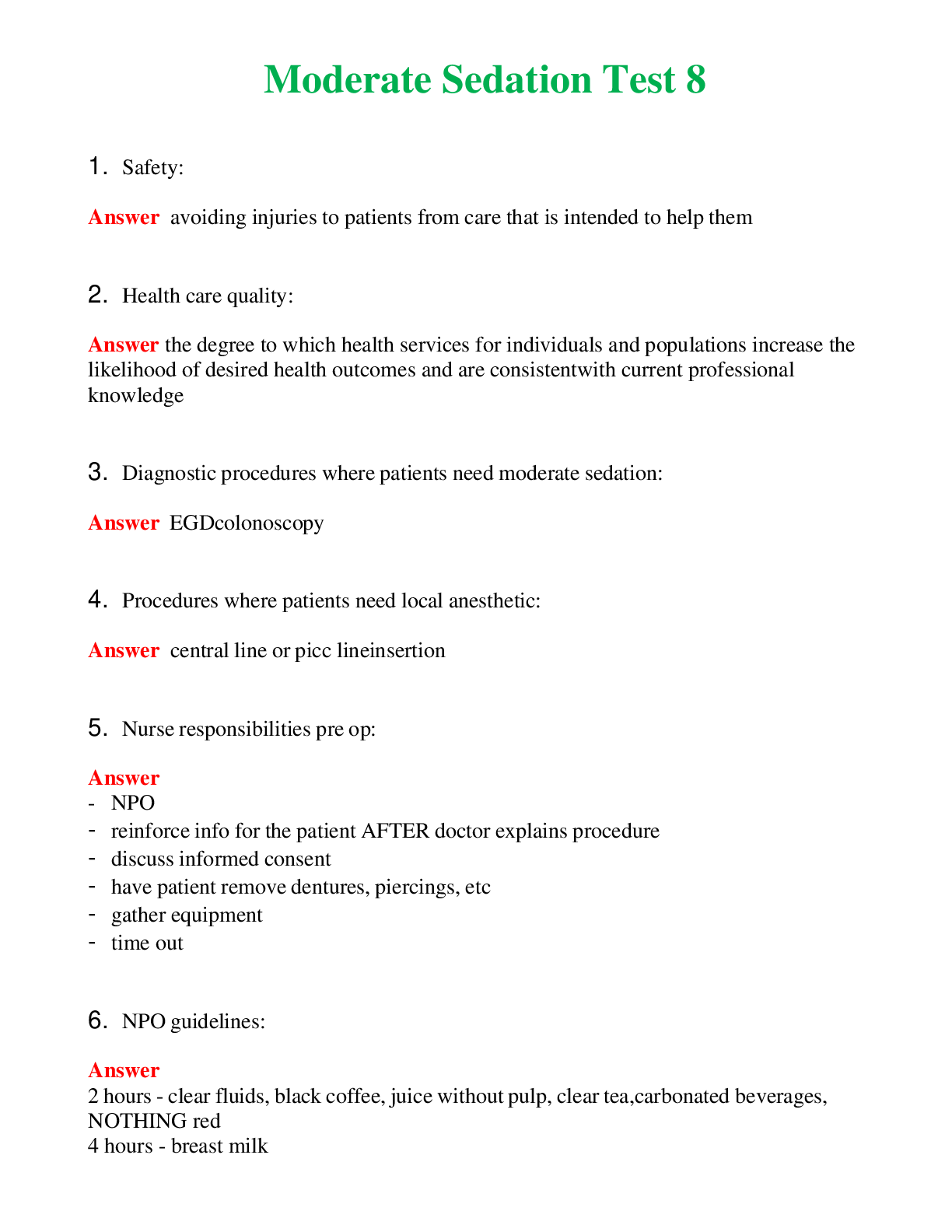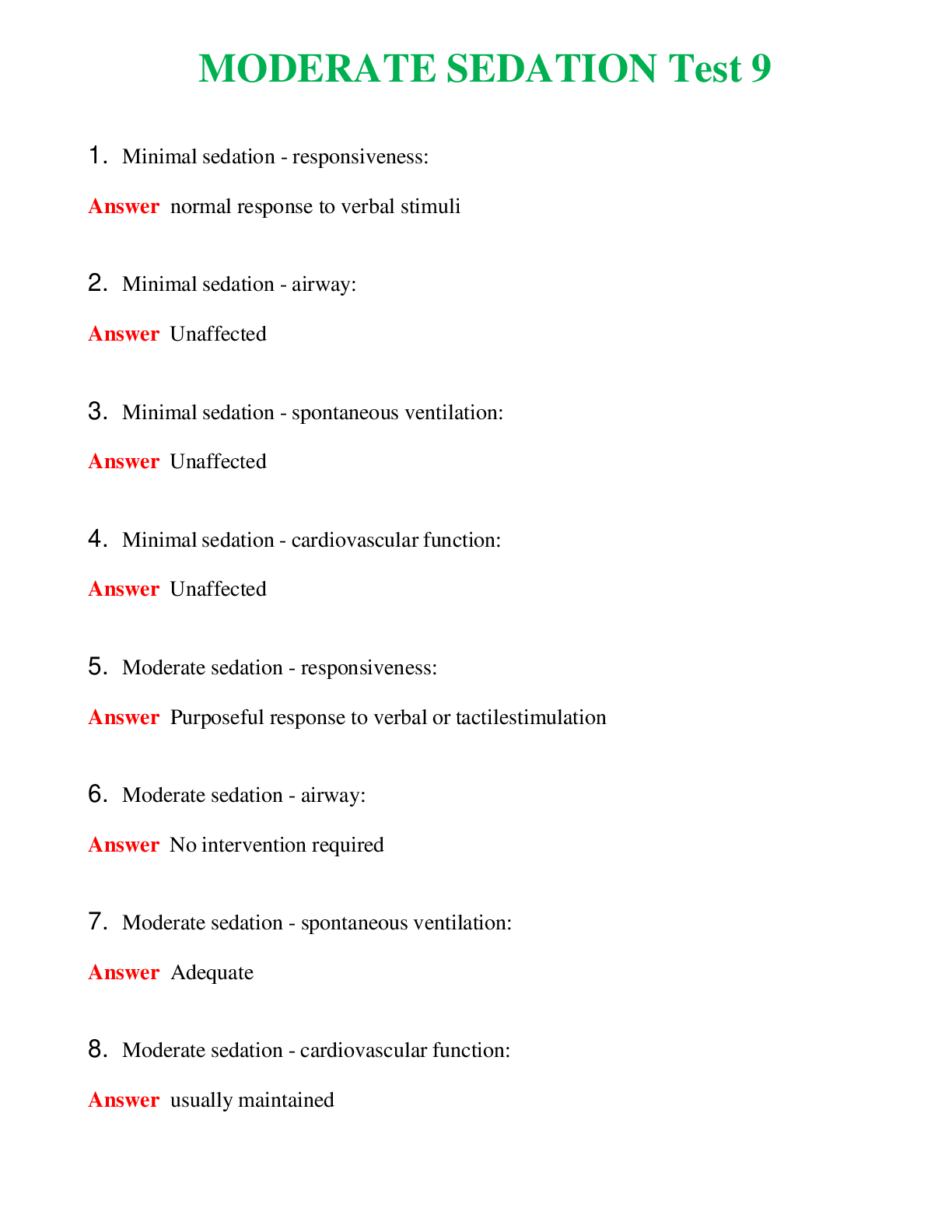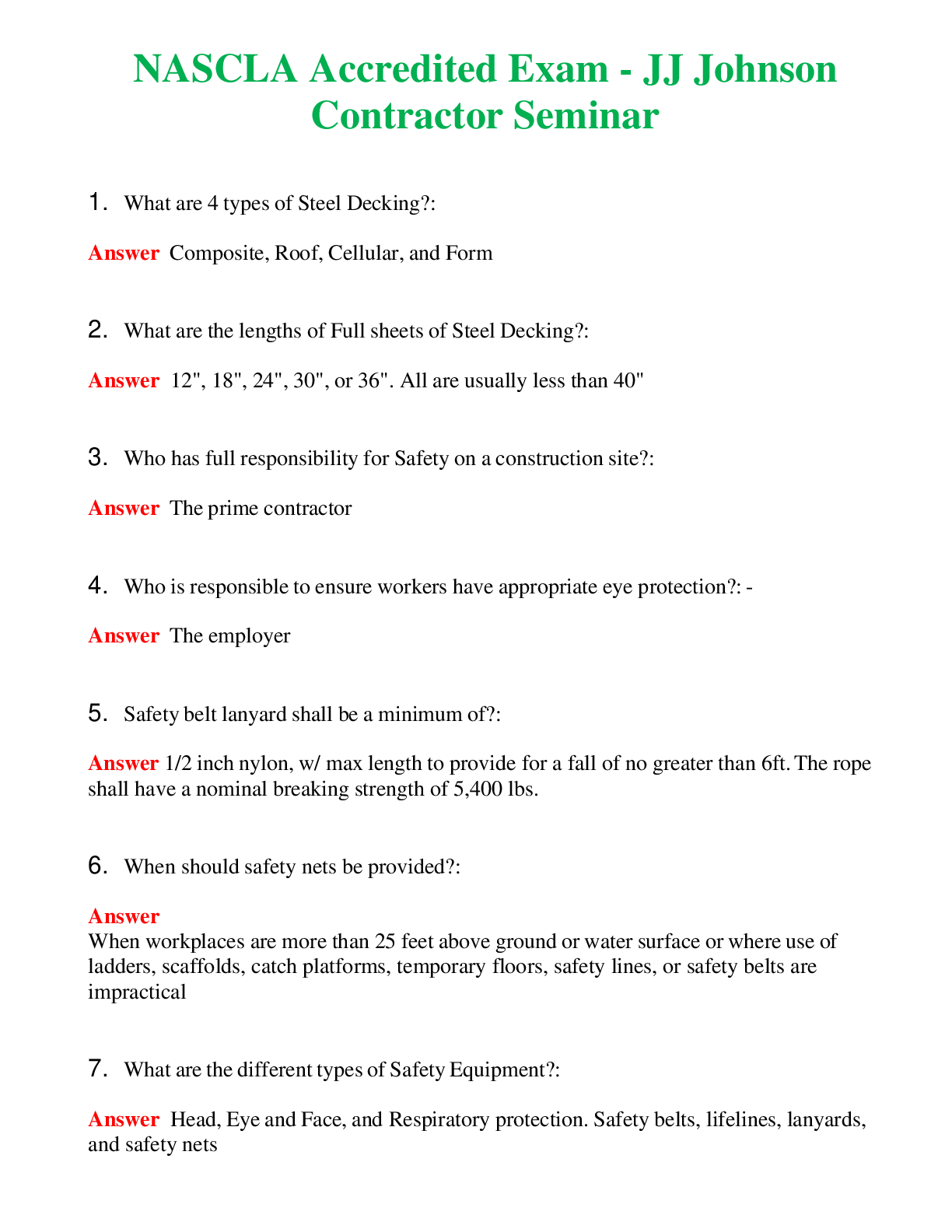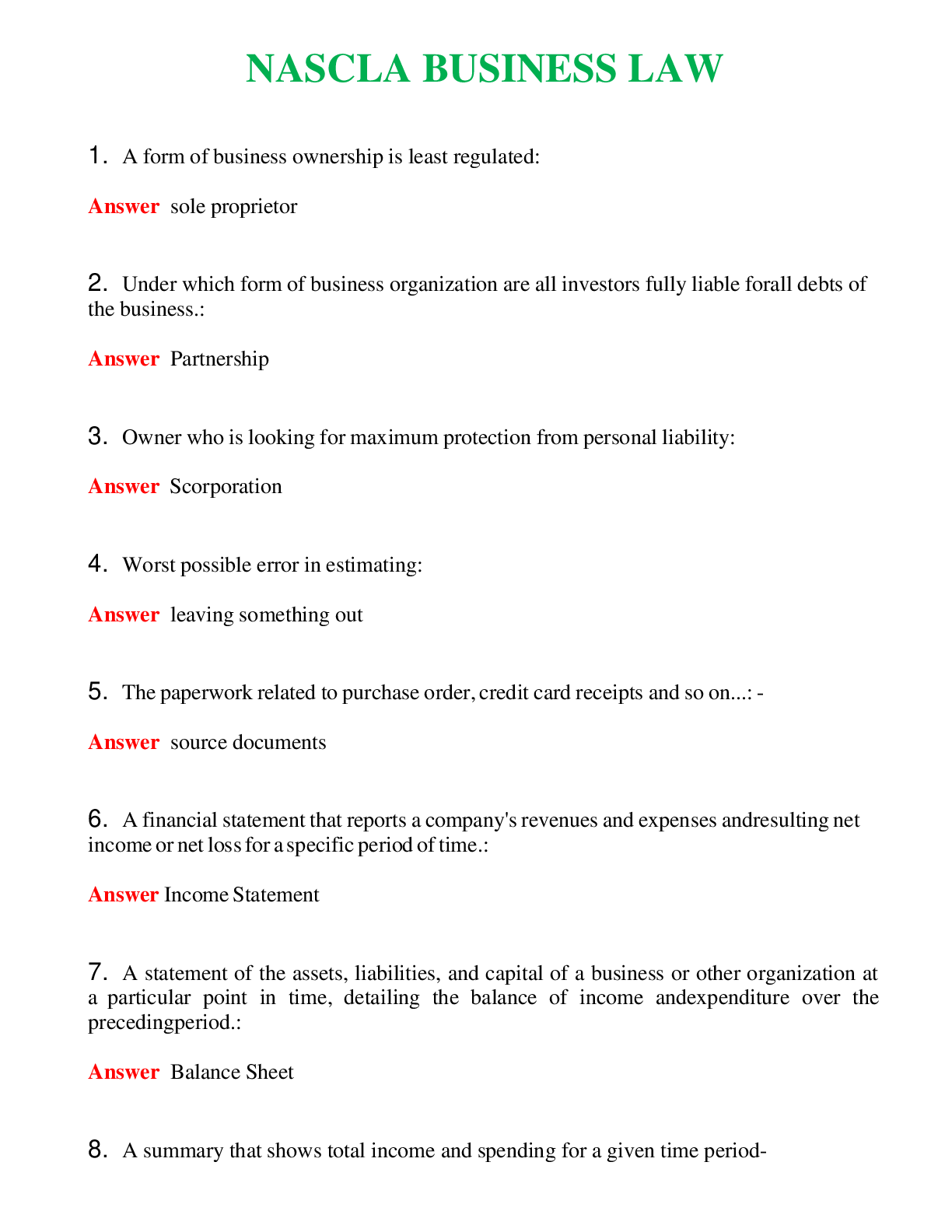Chem 103 exam 4 Complete with Questions and Answers
Document Content and Description Below
Chem 103 exam 4 Complete with Questions and Answers Addition reaction addition of a molecule across a double bond Hydrolosis breaking apart a molecule from addition of water Substitution reacti ... on one or more atoms in a molecule are replaced with another atom or group of atoms hydration reaction water is added to an alkene condensation 2 molecules coming together and releasing a small molecule (typically water) oxidation-reduction oxidation: addition or oxygen or removal of hydrogen reduction: addition of hydrogen or removal of oxygen Markonikov's Rule hydrogen atom from water will add to the carbon that originally had more hydrogen atoms alpha particle Beta particle Gamma Ray positron half life time required for one half of nuclei in a sample of radioactive material to decay radioactive dating process by which approximate age of an object is determined through the use of certain radioactive nuclides -can measure age of organic material -effective until about 50000 years A patient needs 125 µCi of I-151. What volume of a 50 µCi per 10 mL solution should be given. 125 µCi (10mL/50µCi) = 25 mL nuclear fission -very heavy nucleus (mass>200) splits into smaller nuclei of intermediate mass -breaking something up "bigger to smaller" -nuclear power plant & nuclear bombs nuclear fusion -process in which light-mass nuclei combine to form a heavier & more stable nucleus (small nuclei ->larger ones) -is harder, readily on the sun & not on earth - we need to get more energy out than were putting in to make it happen chain reaction material that starts the reaction is also one of the products & can start another reaction physical change identity doesn't change ex: ice to water chemical change changes chemical composition of substance ex: water decomposing (atoms rearranged to form something different) ex: rusting of iron (iron oxide) Question to ask to determine if change is a chemical or physical change Does the identity of the substances change in this process? phase change physical change (solid to liquid, liquid to gas, etc. because formula doesn't change) symbols in chemical equations combination reaction (synthesis reaction) 2 or more substances combine to form a single new substance (A + B --> AB) -2Na(s) + Cl2(g) --> 2NaCl(s) decomposition reaction breaks down into 2 or more simpler substances (AB --> A + B) -2HgO(s) --> 2Hg(l) + O2(g) single-replacement reaction 1 element replaces similar element (A + BC --> AC +B) -Mg(s) + Cu (NO3)2(aq) --> Mg(NO3)2(aq) + Cu(s) double-replacement reaction positive & negative ions of 2 ionic compounds exchange places to form 2 new compounds (AB + CD --> AD+ CB) -2KI(aq) + Pb(NO3)2(aq) --> 2KNO3(aq) + PbI2(s) combustion reaction substance reactants with oxygen gas, releasing energy in form of light & heat. must have 02 as one reactant. -C2H5OH(l) + 3O2(g) --> 2CO2(g) + 3H2O(g) oxidation number positive or negative number assigned to an atom to indicate its degree of oxidation or reduction Oxidation number rule #1 1. # in a neutral free element is 0. any element in an uncombined state, polyatomic or monatomic. (Fe, Li, N2, Ar, & P4 =0) Oxidation number rule #2 2. # of a monatomic ion is same as charge of the ion. (K+ = +1, Se2- = -2, Au3+ = +3) Oxidation number rule #3 3. Oxidation # of oxygen in most compounds is -2 Oxidation number rule #4 4. # of hydrogen in most compounds = +1 Oxidation number rule #5 5. # of fluorine in all compounds = -1 Oxidation number rule #6 6. in a neutral molecule, sum of all oxidation numbers of all atoms is 0. (H2O= 0; H= 2(+1), O=1(-2)). Oxidation number rule #7 7. in a polyatomic ion, the sum of oxidation numbers of all atoms is equal to overall charge on the ion. (SO4-2= -2) oxidation loss of electrons reduction gain of electrons oxidizing agent substance that causes oxidation by accepting electrons reducing agent substance causes reduction by losing electrons entropy measure of degree of randomness or disorder of a system decreasing entropy = decreasing disorder ex: condensation of H20 on glass -as water molecules condense, arrangement increases making the same movement -multiple molecules coming together as one making it more organized increasing entropy = increasing disorder ex: mixing two things together lower entropy more ordered atoms or molecules are higher entropy less ordered atoms or molecules are which phase is more disordered? gas>liquid liquid>solid Gibbs Free energy (ΔG) balance between entropy & enthalpy combines to figure out if spontaneous or not spontaneous ΔG < 0 nonspontaneous ΔG > 0 free energy equation reaction rate change in concentration of a reactant or product with time reaction rate formula -(change in concentration/change in time) If concentration of a substance increases from 0.50 to 1.25M in 35 seconds, what is the rate of reaction? -(.50-1.25/35) = .021 factors affecting reaction rate -concentration = more particles ->more collisions -pressure= higher pressure -> more collisions -surface area= particles separated->react more quickly -temperature= particles heated->faster, more collisions -catalysts= change mechanism of reaction catalyst increases rate of a chemical reaction without being used up in the reaction activation energy -"little bump to get it going" -minimum energy that colliding particles must have in order to undergo a reaction low activation energy reaction is likely to be fast high activation energy reaction is likely to be slow [Show More]
Last updated: 2 years ago
Preview 1 out of 5 pages
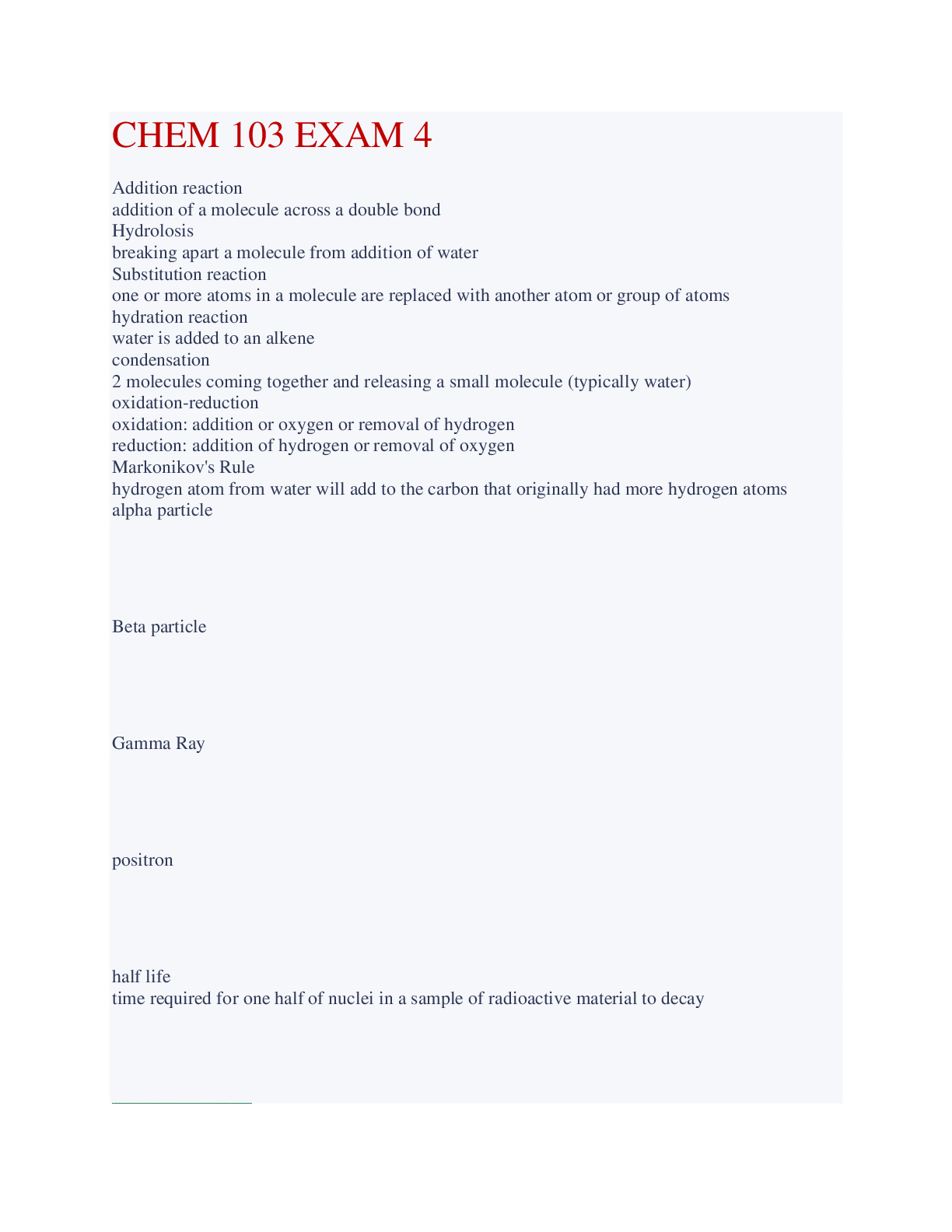
Buy this document to get the full access instantly
Instant Download Access after purchase
Buy NowInstant download
We Accept:

Reviews( 0 )
$8.50
Can't find what you want? Try our AI powered Search
Document information
Connected school, study & course
About the document
Uploaded On
Sep 30, 2023
Number of pages
5
Written in
All
Additional information
This document has been written for:
Uploaded
Sep 30, 2023
Downloads
0
Views
126

.png)



